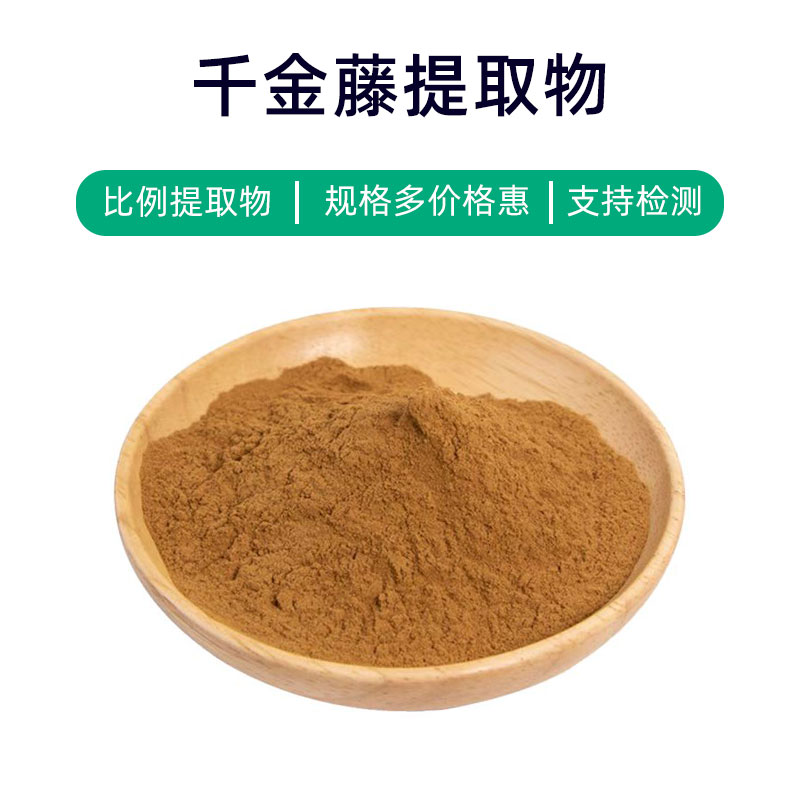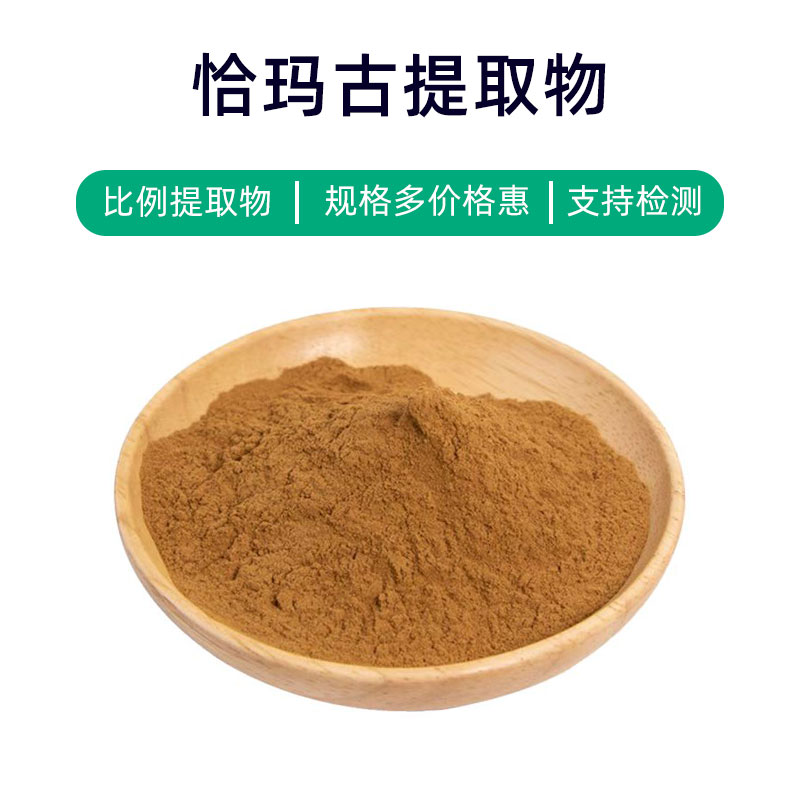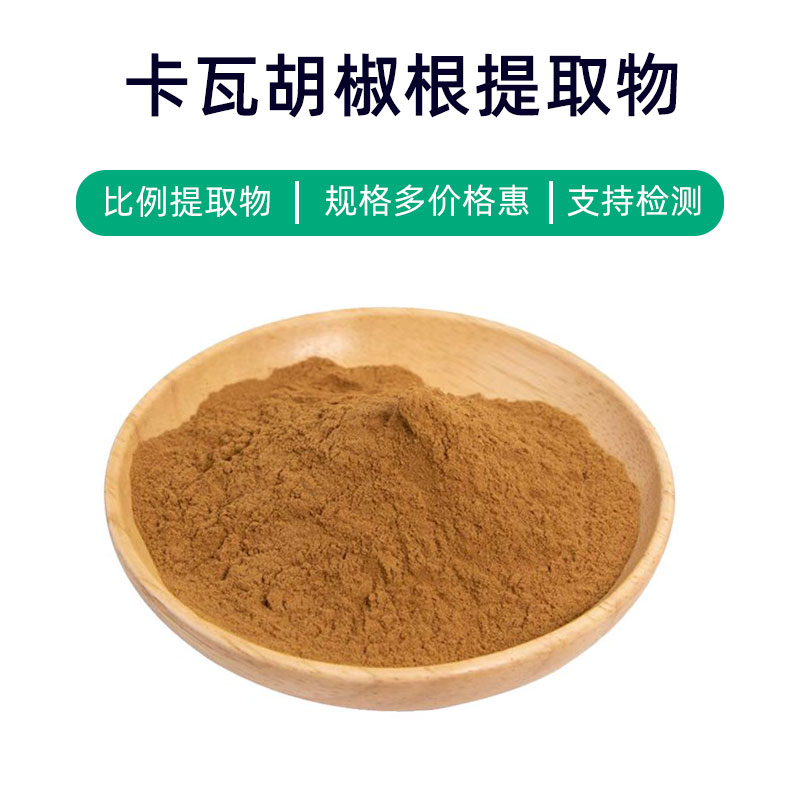Ginseng Flower Extract Product Introduction
Ginseng flower extract is a natural plant extract derived from the flowers of the ginseng plant (Panax ginseng). Its main components include ginsenosides, flavonoids, and polysaccharides. Ginseng flower extract is widely used in medicine, health supplements, and cosmetics, providing various benefits and application values.
Main Components:
- Ginsenosides: Known for their antioxidant, anti-inflammatory, and immune-modulating effects, they help promote skin metabolism and improve skin radiance.
- Flavonoids: Offer antioxidant, anti-aging, and environmental protection benefits for healthy skin.
- Polysaccharides: Contribute to moisturizing, nourishing, and softening the skin, aiding in improving the skin's moisture-oil balance.
Benefits:
Ginseng flower extract is commonly used as an antioxidant in cosmetics, capable of neutralizing free radicals, slowing down skin aging, making the skin look younger and more vibrant; it also promotes collagen production and reduces fine lines and wrinkles, thereby improving skin elasticity and firmness.
Applications:
- Cosmetics: Commonly found in skincare products, masks, lotions, serums, etc., focusing on anti-aging, moisturizing, and brightening effects.
- Medicine: Some health supplements and medications may include ginseng flower extract to support immune regulation and improve overall wellness.
Overall, ginseng flower extract is a natural plant extract with multiple skincare benefits, showing great potential for application in skincare and health products.
Ginseng Flower Extract Production Process
The production process of ginseng flower extract primarily includes the following steps:
- Raw Material Preparation: Select fresh ginseng flowers as raw materials, wash and process them to remove impurities and unwanted parts, ensuring quality and purity.
- Maceration and Soaking: Place the processed ginseng flowers in a maceration tank and add an appropriate solvent (such as ethanol or water) for soaking, maintaining specific time and temperature conditions to fully dissolve the active components.
- Filtration and Separation: Filter the maceration liquid to remove solid particles and impurities, resulting in a clear extract. Then, use separation techniques (such as centrifugation or distillation) to isolate useful components from the extract.
- Concentration and Drying: Concentrate the separated extract to remove excess solvent, yielding a concentrated extract. Subsequently, dry the concentrated solution to create a powder or granular final product.
- Crushing and Screening: Crush and screen the dried extract to ensure the particle size meets requirements, achieving an 80-100 mesh granularity.
- Testing and Quality Control: Conduct quality testing of the extract, including the content of active components, microbiological limits, heavy metals, and other indicators to ensure compliance with relevant standards.
- Packaging and Storage: Package the quality-compliant extract, typically using sealed foil bags or plastic bags, and store under appropriate temperature and humidity conditions to prevent moisture or spoilage.
These are the general steps in producing ginseng flower extract; however, variations may exist among manufacturers, but the overall process remains largely similar to ensure product quality and stability.
Ginseng Flower Extract Effects and Side Effects
Ginseng flower extract, derived from ginseng flowers, offers a variety of benefits and effects:
- Antioxidant Effects: Rich in various antioxidant substances, such as flavonoids and polyphenols, it can neutralize free radicals in the body, reducing oxidative stress damage, helping to maintain cell health.
- Immune Regulation: Research indicates that ginseng flower extract can enhance immune function, promoting the activation and proliferation of immune cells, thereby increasing resistance to diseases.
- Anti-Inflammatory and Pain Relief: Active components in ginseng flower extract possess anti-inflammatory properties that can alleviate inflammation and related pain, providing supportive treatment for arthritis and rheumatic diseases.
- Anti-Aging: Ginseng flower extract contains abundant anti-aging components, promoting collagen synthesis, enhancing skin elasticity, and reducing the appearance of wrinkles and fine lines, helping to slow down the aging process.
- Blood Sugar and Lipid Regulation: Some studies show that ginseng flower extract can help lower blood sugar and regulate blood lipids, providing supportive effects for metabolic diseases like diabetes and hypertension.
- Antimicrobial and Antiviral Properties: The active components in ginseng flower extract may inhibit certain bacteria and viruses, aiding in the prevention and treatment of some infectious diseases.
- Digestive Promotion: Ginseng flower extract is rich in fiber and digestive enzymes, promoting gastrointestinal digestion and absorption, improving indigestion and gastrointestinal function.
While ginseng flower extract has many beneficial effects, users should be aware of potential side effects and precautions:
- Allergic Reactions: Some individuals may experience allergic reactions to certain components of ginseng flower extract, such as skin itching or swelling; a skin sensitivity test is recommended before use.
- Drug Interactions: Prolonged use of ginseng flower extract or concurrent use with other medications may result in drug interactions that affect drug efficacy or increase adverse reaction risks, so it's important to use it under medical supervision.
- Caution for Pregnant and Nursing Women: Due to unclear safety for pregnant and nursing women, these groups should use them cautiously under medical guidance.
Overall, ginseng flower extract holds broad application potential and offers health benefits, but users should carefully select dosage and frequency, following medical or professional advice to ensure safe and effective use.
Ginseng Flower Extract Application Scenarios and Dosage
Ginseng flower extract has extensive applications in medicine, food, and cosmetics, with the following specific application scenarios and dosage instructions:
- Applications in Medicine:
- Antioxidants: Ginseng flower extract, rich in flavonoids and polyphenols, can be used to formulate antioxidant products, helping prevent diseases caused by oxidative stress.
- Immune Regulators: Can be used as an immune regulator to strengthen immune function and enhance resistance to disease.
- Anti-Inflammatory and Pain Relievers: Utilized to produce anti-inflammatory and pain relief medications, providing some relief for arthritis and rheumatic diseases.
- Anti-Aging Products: Suitable for producing anti-aging health supplements, slowing down skin aging and increasing skin elasticity.
- Cardiovascular Health Products: Capable of regulating blood sugar and lipids, making it suitable for cardiovascular health products.
- Applications in Food:
- Health Foods: Ginseng flower extract can be used to produce health foods, such as immune-regulating and antioxidant foods, contributing to enhancing bodily resistance.
- Functional Foods: Can be added to functional foods that regulate blood sugar and reduce lipids, catering to diverse consumer needs.
- Applications in Cosmetics:
- Skin Care Products: As an antioxidant and anti-aging ingredient, it can be added to skincare products to help improve skin condition and reduce wrinkles and fine lines.
- Whitening Products: Can be used to create whitening products, diminishing spots and brightening skin tone.
- Cleansing Products: Adding an appropriate amount of ginseng flower extract offers cleansing, anti-inflammatory, and soothing effects on the skin.
Dosage Recommendations:
- In Medicine: Use as advised by doctors or professionals, as dosages and methods will vary depending on specific products.
- In Food: Can be added to food according to safety dosage standards and regulations.
- In Cosmetics: Add an appropriate amount of ginseng flower extract based on product formula requirements, typically recommended at a ratio of 1%-5%.
It is important to note that the dosage and usage methods for ginseng flower extract may differ across product applications; it's advised to read product instructions carefully or consult relevant professionals before use. Furthermore, individual sensitivity to ingredients can affect dosage, so performing a skin test is recommended before widespread use.
Ginseng Flower Source Plant Introduction, Distribution, and Growth Environment
Ginseng flower, scientifically known as Panax ginseng, is a perennial herb belonging to the Araliaceae family and is one of the most renowned traditional Chinese medicines. Below is detailed information about the source plant of ginseng flower extract, including its introduction, distribution, and growth environment:
- Plant Introduction:
Ginseng flower is an upright-growing herb, typically reaching heights of 20 to 60 centimeters, with a rhizomatous structure and branching. Its leaves are palmate compound leaves, and it blooms in the summer with umbrella-shaped flower clusters, usually white or pale yellow. After flowering, it produces fruit with red seeds. The root system of ginseng flower is highly developed and is an important component of the ginseng plant. - Distribution:
Ginseng flower is native to East Asia, mainly found in China, Korea, Japan, and the Russian Far East. In China, it is widely distributed in the northeastern, northern, and northwestern regions, particularly in provinces like Liaoning, Jilin, and Heilongjiang. - Growth Environment:
Ginseng flower thrives in shaded, moist environments, typically found in higher elevation, cooler, and humid mountainous forests or meadows. Ideal growth conditions include temperatures between 15-20 degrees Celsius, high relative humidity, and well-draining, nutrient-rich soils rich in organic matter. Ginseng flower does not require much sunlight and is better suited to semi-shaded environments.
Overall, ginseng flower extract is sourced from the roots of the ginseng flower, which is a shade-loving, moisture-loving, and cold-resistant herb widely distributed and cultivated in East Asia.
Ginseng Flower Extract Processing and Storage
The processing of ginseng flower extract involves several key steps: First, mature ginseng flower roots are harvested, then cleaned and processed to remove impurities while preserving root integrity. The cleaned ginseng flower roots are then crushed or ground to extract effective components. Next, appropriate solvent maceration or extraction is performed to obtain active ingredients from the ginseng flower roots. Finally, filtration, concentration, and drying steps are completed to produce the final ginseng flower extract.
For storage, ginseng flower extract should be kept in a dry, cool, and well-ventilated environment, avoiding direct sunlight and high temperatures. As for storage containers, choose airtight glass or plastic bottles, ensuring they are well sealed to prevent air and moisture from entering, thus maintaining product quality. It's also essential to avoid contact with harmful substances, keep the environment clean and dry, and regularly check and monitor the expiration date and storage condition to ensure the quality and efficacy of ginseng flower extract.
Monica Sun is a seasoned expert in the plant extraction industry with over a decade of experience in research and production. She specializes in the extraction and purification of plant active ingredients, focusing on driving innovation in natural product applications. Monica has participated in the development of multiple functional plant extracts, delivering high-value natural raw material solutions for the health food, pharmaceutical, and dietary supplement sectors.


















